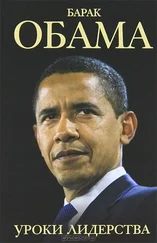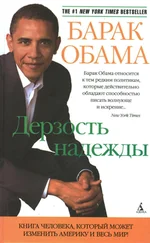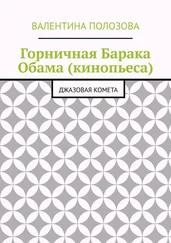Барак Обама - The Audacity of Hope
Здесь есть возможность читать онлайн «Барак Обама - The Audacity of Hope» весь текст электронной книги совершенно бесплатно (целиком полную версию без сокращений). В некоторых случаях можно слушать аудио, скачать через торрент в формате fb2 и присутствует краткое содержание. Жанр: Политика, на английском языке. Описание произведения, (предисловие) а так же отзывы посетителей доступны на портале библиотеки ЛибКат.
- Название:The Audacity of Hope
- Автор:
- Жанр:
- Год:неизвестен
- ISBN:нет данных
- Рейтинг книги:5 / 5. Голосов: 1
-
Избранное:Добавить в избранное
- Отзывы:
-
Ваша оценка:
- 100
- 1
- 2
- 3
- 4
- 5
The Audacity of Hope: краткое содержание, описание и аннотация
Предлагаем к чтению аннотацию, описание, краткое содержание или предисловие (зависит от того, что написал сам автор книги «The Audacity of Hope»). Если вы не нашли необходимую информацию о книге — напишите в комментариях, мы постараемся отыскать её.
The Audacity of Hope — читать онлайн бесплатно полную книгу (весь текст) целиком
Ниже представлен текст книги, разбитый по страницам. Система сохранения места последней прочитанной страницы, позволяет с удобством читать онлайн бесплатно книгу «The Audacity of Hope», без необходимости каждый раз заново искать на чём Вы остановились. Поставьте закладку, и сможете в любой момент перейти на страницу, на которой закончили чтение.
Интервал:
Закладка:
As a boy of seven or eight, none of this concerned me much. I remember those years as a joyous time, full of adventure and mystery — days of chasing down chickens and running from water buffalo, nights of shadow puppets and ghost stories and street vendors bringing delectable sweets to our door. As it was, I knew that relative to our neighbors we were doing fine — unlike many, we always had enough to eat.
And perhaps more than that, I understood, even at a young age, that my family’s status was determined not only by our wealth but by our ties to the West. My mother might scowl at the attitudes she heard from other Americans in Jakarta, their condescension toward Indonesians, their unwillingness to learn anything about the country that was hosting them — but given the exchange rate, she was glad to be getting paid in dollars rather than the rupiahs her Indonesian colleagues at the embassy were paid. We might live as Indonesians lived — but every so often my mother would take me to the American Club, where I could jump in the pool and watch cartoons and sip Coca-Cola to my heart’s content. Sometimes, when my Indonesian friends came to our house, I would show them books of photographs, of Disneyland or the Empire State Building, that my grandmother had sent me; sometimes we would thumb through the Sears Roebuck catalog and marvel at the treasures on display. All this, I knew, was part of my heritage and set me apart, for my mother and I were citizens of the United States, beneficiaries of its power, safe and secure under the blanket of its protection.
The scope of that power was hard to miss. The U.S. military conducted joint exercises with the Indonesian military and training programs for its officers. President Suharto turned to a cadre of American economists to design Indonesia’s development plan, based on free-market principles and foreign investment. American development consultants formed a steady line outside government ministries, helping to manage the massive influx of foreign assistance from the U.S. Agency for International Development and the World Bank. And although corruption permeated every level of government — even the smallest interaction with a policeman or bureaucrat involved a bribe, and just about every commodity or product coming in and out of the country, from oil to wheat to automobiles, went through companies controlled by the president, his family, or members of the ruling junta — enough of the oil wealth and foreign aid was plowed back into schools, roads, and other infrastructure that Indonesia’s general population saw its living standards rise dramatically; between 1967 and 1997, per capita income would go from $50 to $4,600 a year. As far as the United States was concerned, Indonesia had become a model of stability, a reliable supplier of raw materials and importer of Western goods, a stalwart ally and bulwark against communism.
I would stay in Indonesia long enough to see some of this newfound prosperity firsthand. Released from the army, my stepfather began working for an American oil company. We moved to a bigger house and got a car and a driver, a refrigerator, and a television set. But in 1971 my mother — concerned for my education and perhaps anticipating her own growing distance from my stepfather — sent me to live with my grandparents in Hawaii. A year later she and my sister would join me. My mother’s ties to Indonesia would never diminish; for the next twenty years she would travel back and forth, working for international agencies for six or twelve months at a time as a specialist in women’s development issues, designing programs to help village women start their own businesses or bring their produce to market. But while during my teenage years I would return to Indonesia three or four times on short visits, my life and attention gradually turned elsewhere.
What I know of Indonesia’s subsequent history, then, I know mainly through books, newspapers, and the stories my mother told me. For twenty-five years, in fits and starts, Indonesia’s economy continued to grow. Jakarta became a metropolis of almost nine million souls, with skyscrapers, slums, smog, and nightmare traffic. Men and women left the countryside to join the ranks of wage labor in manufacturing plants built by foreign investment, making sneakers for Nike and shirts for the Gap. Bali became the resort of choice for surfers and rock stars, with five-star hotels, Internet connections, and a Kentucky Fried Chicken franchise. By the early nineties, Indonesia was considered an “Asian tiger,” the next great success story of a globalizing world.
Even the darker aspects of Indonesian life — its politics and human rights record — showed signs of improvement. When it came to sheer brutality, the post-1967 Suharto regime never reached the levels of Iraq under Saddam Hussein; with his subdued, placid style, the Indonesian president would never attract the attention that more demonstrative strongmen like Pinochet or the Shah of Iran did. By any measure, though, Suharto’s rule was harshly repressive. Arrests and torture of dissidents were common, a free press nonexistent, elections a mere formality. When ethnically based secessionist movements sprang up in areas like Aceh, the army targeted not just guerrillas but civilians for swift retribution — murder, rape, villages set afire. And throughout the seventies and eighties, all this was done with the knowledge, if not outright approval, of U.S. administrations.
But with the end of the Cold War, Washington’s attitudes began to change. The State Department began pressuring Indonesia to curb its human rights abuses. In 1992, after Indonesian military units massacred peaceful demonstrators in Dili, East Timor, Congress terminated military aid to the Indonesian government. By 1996, Indonesian reformists had begun taking to the streets, openly talking about corruption in high offices, the military’s excesses, and the need for free and fair elections.
Then, in 1997, the bottom fell out. A run on currencies and securities throughout Asia engulfed an Indonesian economy already corroded by decades of corruption. The rupiah’s value fell 85 percent in a matter of months. Indonesian companies that had borrowed in dollars saw their balance sheets collapse. In exchange for a $43 billion bailout, the Western-dominated International Monetary Fund, or IMF, insisted on a series of austerity measures (cutting government subsidies, raising interest rates) that would lead the price of such staples as rice and kerosene to nearly double. By the time the crisis was over, Indonesia’s economy had contracted almost 14 percent. Riots and demonstrations grew so severe that Suharto was finally forced to resign, and in 1998 the country’s first free elections were held, with some forty-eight parties vying for seats and some ninety-three million people casting their votes.
On the surface, at least, Indonesia has survived the twin shocks of financial meltdown and democratization. The stock market is booming, and a second national election went off without major incident, leading to a peaceful transfer of power. If corruption remains endemic and the military remains a potent force, there’s been an explosion of independent newspapers and political parties to channel discontent.
On the other hand, democracy hasn’t brought a return to prosperity. Per capita income is nearly 22 percent less than it was in 1997. The gap between rich and poor, always cavernous, appears to have worsened. The average Indonesian’s sense of deprivation is amplified by the Internet and satellite TV, which beam in images of the unattainable riches of London, New York, Hong Kong, and Paris in exquisite detail. And anti-American sentiment, almost nonexistent during the Suharto years, is now widespread, thanks in part to perceptions that New York speculators and the IMF purposely triggered the Asian financial crisis. In a 2003 poll, most Indonesians had a higher opinion of Osama bin Laden than they did of George W. Bush.
Читать дальшеИнтервал:
Закладка:
Похожие книги на «The Audacity of Hope»
Представляем Вашему вниманию похожие книги на «The Audacity of Hope» списком для выбора. Мы отобрали схожую по названию и смыслу литературу в надежде предоставить читателям больше вариантов отыскать новые, интересные, ещё непрочитанные произведения.
Обсуждение, отзывы о книге «The Audacity of Hope» и просто собственные мнения читателей. Оставьте ваши комментарии, напишите, что Вы думаете о произведении, его смысле или главных героях. Укажите что конкретно понравилось, а что нет, и почему Вы так считаете.

![Барак Обама - Дерзость надежды. Мысли об возрождении американской мечты [The Audacity of Hope]](/books/26630/barak-obama-derzost-nadezhdy-mysli-ob-vozrozhdenii-thumb.webp)










